06 December 2022
![]() 7 mins Read
7 mins Read
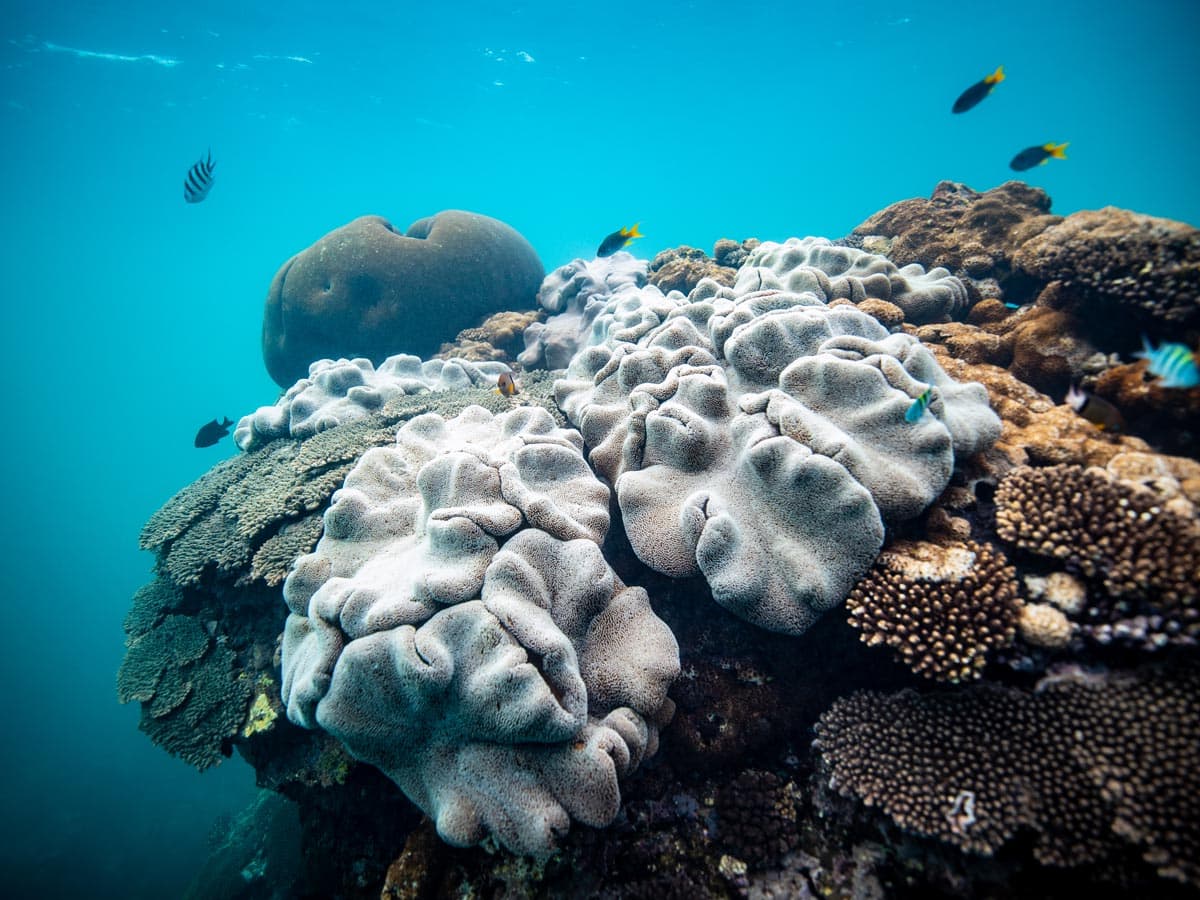
With over 12,000 kilometres of coastline, Western Australia is bursting with marine activity and snorkelling spots that are begging to be explored. It’s also believed to be home to more than 1600 shipwrecks.
Shipwreck Hunters Australia, the new six-part docuseries on Disney +, follows experienced divers and underwater filmmakers as they make world-first discoveries at long-lost shipwreck sites around Tryal Rocks, Ningaloo Reef, Houtman Abrolhos Islands and more.
The team behind Shipwreck Hunters, Ryan Chatfield and Nush Freedman have revealed their top six spots to snorkel and interact with marine life in Western Australia.
These snorkelling spots suit beginners and families all the way up to the more advanced and range from easily accessible to a little more remote and isolated. Here they are.
Best time to visit: December – May
Experience level: Intermediate to expert
Fish Hook Bay is one of the most protected bays on Rottnest Island. Nestled into the southern side of the West End, boats must carefully navigate between two huge chunks of the reef to reach the calm and tranquil waters of the bay.
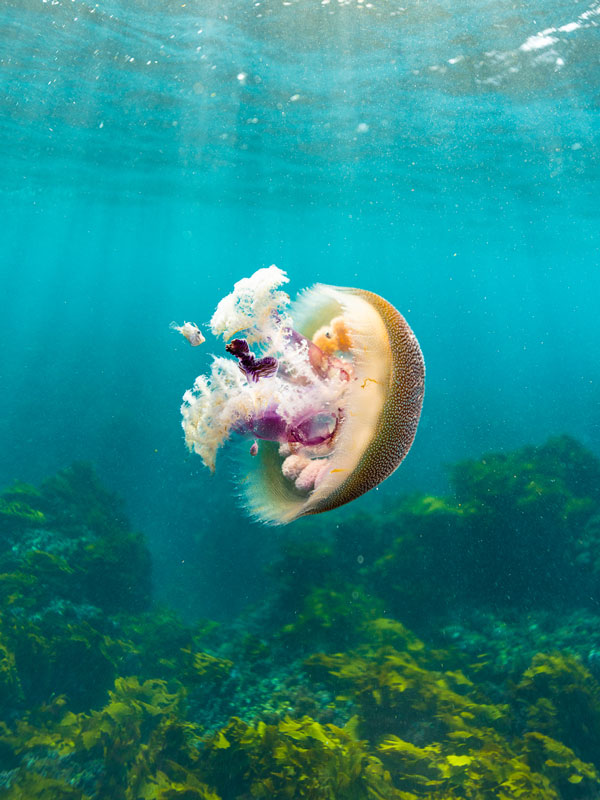
See the marine life at Fish Hook Bay. (Image: Ryan Chatfield, Terra Australis)
With an average depth of around two to five metres, the bay is home to an abundance of sea creatures and an ever-changing sea floor.
It’s a great location to do some exploration snorkelling, with a beautiful cave on the eastern side that greets you with stunning shafts of light that dance and shimmer on the sand floor.
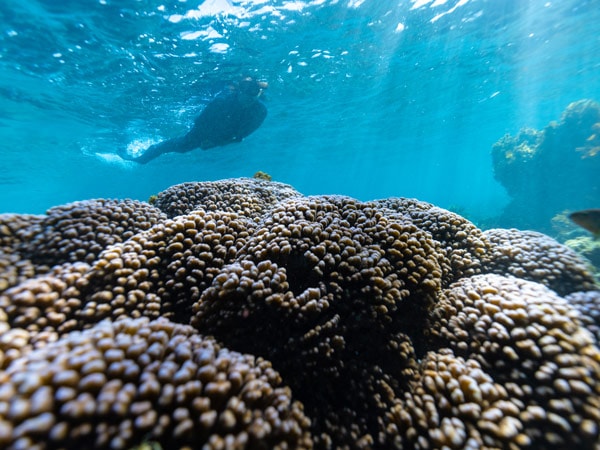
Fish Hook Bay is a great location to do some exploration snorkelling. (Image: Ryan Chatfield, Terra Australis)
It’s common to spot large smooth, black, fiddler and eagle rays, buffalo bream, western blue devils, king wrasse, nudibranch, sea cucumbers and sea stars.
Chatfield rates this spot because it’s rough and rugged at the West End, and you never know what you are going to encounter down there. You can’t always access it due to the weather but when you score it, it’s as good as it gets!

The average depth is around two to five metres. (Image: Ryan Chatfield, Terra Australis)
Best time to visit: June – October
Experience level: Beginner to expert
Coral Bay on Australia’s Coral Coast needs no introduction. Snorkelling from Bills Bay is a beautiful place for beginners to intermediates to be treated to an underwater experience they will never forget.
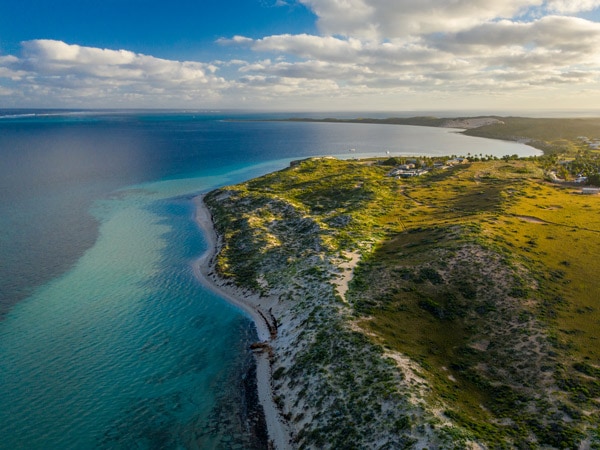
Coral Bay is iconic. (Image: Ryan Chatfield, Terra Australis)
Other great accessible locations are Five Fingers Reef and Oyster Bridge. As soon as you enter the warm waters of Coral Bay you can sense the pristine marine environment all around you. And when you leave the surface, you are immersed in another world.
Crystal clear waters teem with brightly coloured fish, too many to name and so many to see. They dart and dance between stunning hard and soft coral outcrops. Sea turtles cruise lazily through the waters, stopping every now and again to munch and crunch.
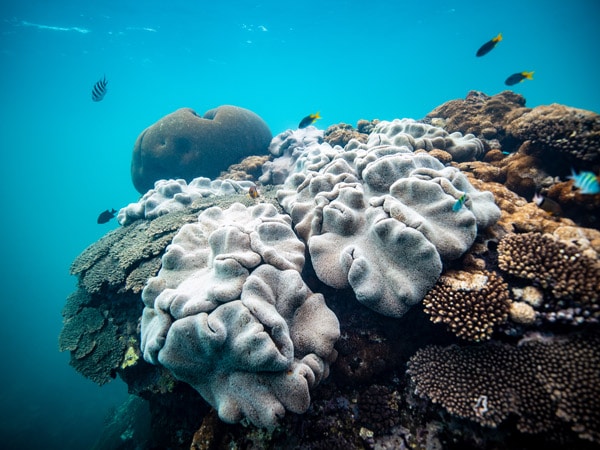
The crystal clear waters of Coral Bay make it a one-of-a-kind snorkelling experience. (Image: Ryan Chatfield, Terra Australis)
Chatfield has had beautiful encounters with manta rays, lemon sharks, leopard sharks, eagle rays, whale sharks, and you can even spot humpbacks.
“I always like to stop and stay still in Coral Bay when I’m in the water, just find a nice sandy patch and go to the bottom,” he said.
“That’s when you really see the reef and all its creatures.
“Coral Bay is really an incredible location, but it is also very fragile. We encourage people to be conscious of body positioning when they’re snorkelling, to avoid damage to the coral and destruction of marine habitats.”
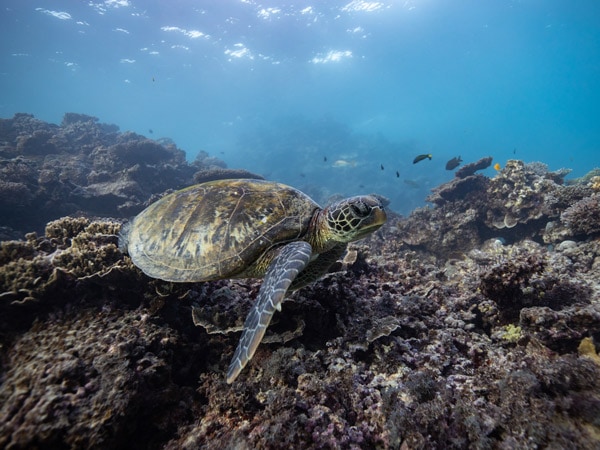
You might spot a turtle at Coral Bay. (Image: Ryan Chatfield, Terra Australis)
Best time to visit: June – October
Experience level: Beginner to expert
Gnaraloo is a little more off the beaten track. It’s off-grid with no reception, so take everything you need for your time away.
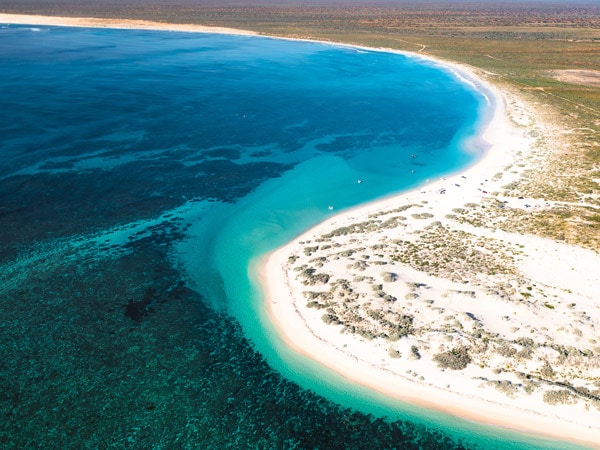
Gnaraloo is off the beaten track. (Image: Ryan Chatfield, Terra Australis)
With the isolation comes the pristine marine ecosystems of the Coral Coast, though. Gnaraloo Bay is a beautiful shallow lagoon that lends itself to an easy-going drift dive.
If you walk 500 metres up the beach, put all your gear on and then swim 50 – 75 metres offshore you’ll find yourself gently pushed along on one of WA’s best snorkel spots.
Using your fins and hands as rudders you can steer yourself as you go, much like a self-guided tour of the coral gardens, you can zoom in for closer views of the huge stag horn coral outcrops.
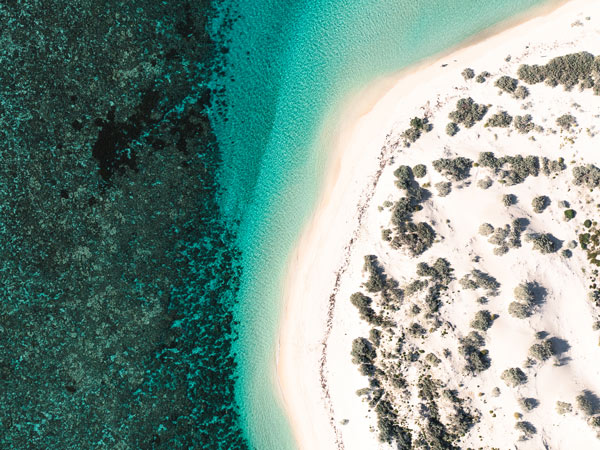
Gnaraloo Bay is a beautiful shallow lagoon. (Image: Ryan Chatfield, Terra Australis)
Best time to visit: March – October
Experience level: Beginner
Lakeside is located inside the Cape Range National Park in Exmouth on the Ningaloo Reef.
There are three sets of coral bommies surrounded by tropical fish over glistening white sand here and the depth ranges from two to five metres.
This spot is a little bit deeper than most of the other snorkelling sights in the Cape Range National Park so it’s perfect for those wanting to improve their snorkelling skills and get out into a bit deeper water.
Because of the extra depth, it’s a great place to find reef sharks and stingrays under the coral ledges or cruising on the sand between the coral bommies. And it’s also a popular spot to see turtles.
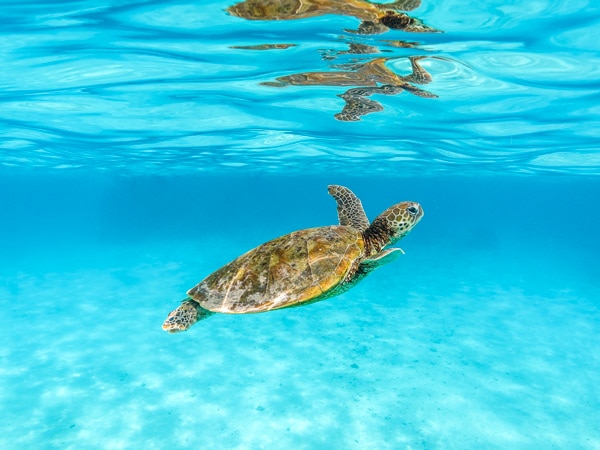
Have you ever swum with a turtle? (Image: Nush Freedman, Terra Australis)
Best time to visit: November – May
Experience level: Beginner to advanced
This beautiful snorkelling site is perfect for both beginner and advanced snorkellers. You can expect to see cool water corals, sponges and lots of fish life as well as the occasional visits from port Jackson sharks, eagle rays, octopus, seals and stingrays.
If you are a beginner snorkeller you can stay inside the reef and snorkel in the shallows where it’s beautiful, calm and perfect for families with small kids.
If you are feeling more adventurous you can head out to the back of the reef and get lost in all the swim-throughs full of fish and little caves. There are incredible sea grasses moving in the swell and once you are out the back of the reef the water gets a bit deeper so it’s great for finding larger fish species such as buff bream which usually school in hundreds which is remarkable to swim through!
Mettams Pool has a special place in Freedman’s heart because it was a big part of her childhood growing up in the northern suburbs of Perth.
“I would recommend choosing a day with minimal swell as these conditions are better when venturing out to the back of the reef and usually the water is a lot clearer,” she said.
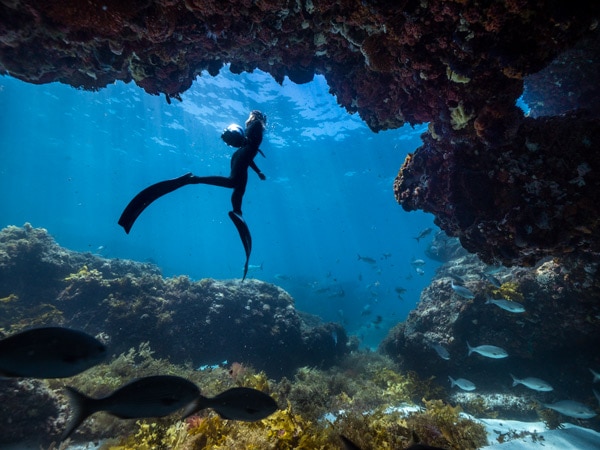
Mettams Pool has options for all experience levels. (Image: Nush Freedman, Terra Australis)
Best time to visit: March – October
Experience level: Intermediate
Osprey Bay has got to be one of the most beautiful snorkelling sights on Ningaloo Reef.
This spot is also located inside the Cape Range National Park and is an underwater paradise.
Accessible from the shore, you will need a kayak or paddle board to get out to the snorkelling site as it is about 700 metres from the shore, so it’s only suitable for confident snorkellers.
The paddle over is beautiful as you travel over the Ningaloo Lagoon where you can often see dolphins cruising by or turtles popping their heads up for a breath.
Osprey Bay ranges between two to eight metres in depth and is home to some spectacular corals and tropical fish. If you’re lucky you might also see reef sharks, stingrays, and turtles cruising by.
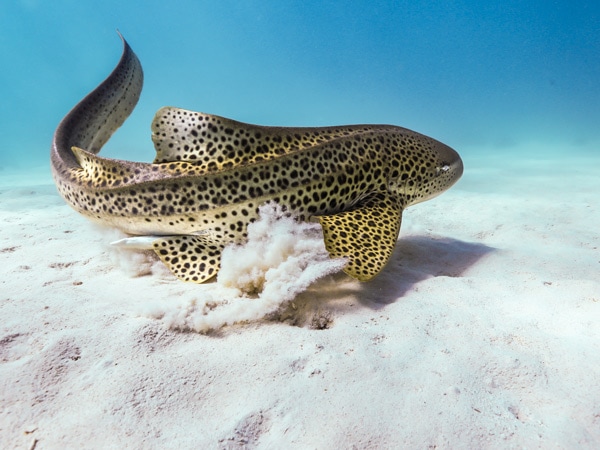
Leopard sharks frequent Osprey Bay. (Image: Nush Freedman, Terra Australis)
Unfortunately Fish Hook Bay can only be accessed via boat, but oh boy, what a spot.